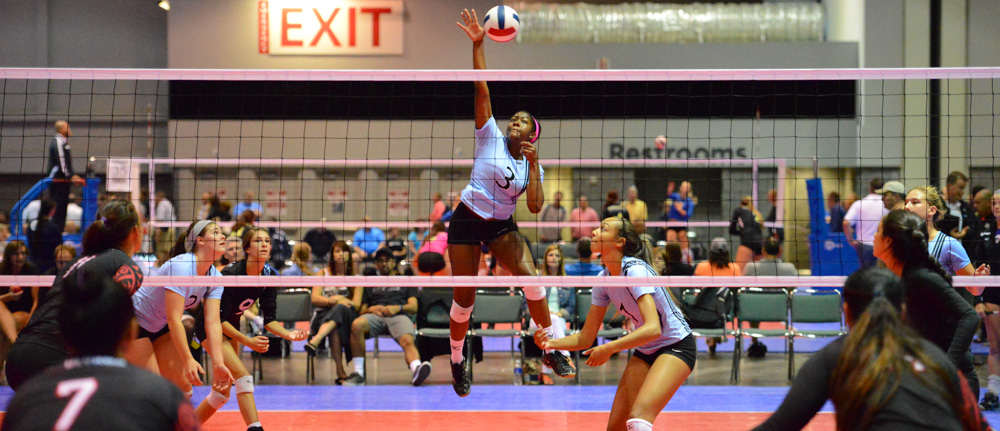

Perfecting the deadlift is an essential exercise to strengthen and protect your lower back. Every time you lift an object from the floor, you are performing a deadlift. Defensive play also similarly stresses your lower back, and practicing the deadlift will build posterior chain strength, core strength, and hip mobility to maintain proper spinal alignment during the stresses of competition.
Starrett's "top down setup" is an excellent way to establish ideal spinal alignment before beginning the lift, and with slight modification it can become a template for lowering yourself into a defensive ready position as well.
Begin by standing upright with your feet in your squat stance, and positioned approximately halfway underneath the bar. You will establish your ideal foot position beneath the bar with practice, as the goal is to ensure that your shins just touch the bar when you are down and ready to lift.
While standing upright, establish and maintain spinal alignment through our now-familiar protocol of squeezing glutes and engaging abs. Then hinge forward at the hips as far as you can without breaking anywhere along your back, with your arms extended towards the bar. Critically, you should only bend at the hips at this stage – the goal is to lean forward as much as possible while maintaining your spine in its original stable position. Don't break your back!
Bending exclusively at the hips (a "hip hinge") may not be a natural movement at first. One helpful hint includes placing the fingertips of each hand on your anterior superior iliac spines – those are the bony protuberances on the front sides of your hips – and pushing backwards to emphasize that your hips should move backwards while your torso is tipping forwards.
If you can grip the bar while only bending forward at the hips, congratulations – you have excellent hip mobility. Most athletes find that lack of range in their posterior chain leaves them a bit short of the bar – if that's the case, bend your knees to drop down to the bar once you've reached your full hip hinge range.
You can start by simply gripping the bar overhand, which is the ideal grip for learning to deadlift while generating torque through breaking the bar. As weights get heavier, you will be introduced to the "hook grip" – essentially wrapping your thumbs around the bar, and your fingers around your thumbs. A hook grip allows you to lift heavier weights while still generating external rotation torque.
Once you have gripped the bar, lower yourself into position by bending your knees and settling your hips backwards so that your arms are perfectly vertical, the bar is just against your shins, and you are prepared to pull the bar straight up. At this point, your lower body is in a position similar to the defensive ready position, with your spine aligned and core engaged.

Despite being described as a "pulling" exercise, the deadlift is best accomplished by thinking of it as two "pushing" exercises. Specifically, when you begin to lift, you should think of "pushing the floor away from you" – this helps focus your movement on lifting with your legs, and not pulling with your back. Once the bar has cleared your knees, think of "pushing your hips forward" to finish standing up and complete the lift.
 First phase of the deadlift, "pushing the floor" away while maintaining neutral spine
First phase of the deadlift, "pushing the floor" away while maintaining neutral spine
 Second phase of the deadlift, thrusting hips forward once bar has passed knees
Second phase of the deadlift, thrusting hips forward once bar has passed knees
 Finish position with the shoulders and hips locked out, prepared to reverse the sequence
Finish position with the shoulders and hips locked out, prepared to reverse the sequence
Once you are locked out at the top position, returning the weight to the ground is simply the reverse process. Start by tilting forward while lowering hips, maintaining spinal alignment, until the bar is below your knees. Once the bar clears your knees, simply drop your hips to return the weight to the floor. Keep spreading the floor and knees out to ensure stable knees and ankles throughout.
Some additional points to consider:
1. As in the squat, you should strive to keep your shins as vertical as possible for as long as possible throughout the lift. Your knees should never collapse forward when starting or finishing the lift.
2. When starting the deadlift, your partner should observe your lift to ensure that your hips and shoulders are both moving at the same time. Never allow your hips to start moving up before your shoulders – that indicates that the weight is too heavy, and will lead to your pulling with your back to complete the lift.
3. Before starting to lift, always ensure that you put tension in the system first. Never jerk the bar to get started – ensure that you are generating torque in your hips and shoulders, then begin to stand up to establish tension before committing to lift the weight.
4. The bar should always travel in a straight line up and down, and should track as close to your body as possible. To prevent the bar from scraping your shins, it is advisable to wear long socks or gym pants while deadlifting -- especially with heavier weights.
Practice using the top-down setup every time you perform a deadlift in your daily activities, even when lifting light objects. Ensuring that you ingrain the motor pattern of lifting with your hips and legs instead of pulling with your back is a valuable skill that can prevent disabling injuries.
As mentioned previously, the deadlift setup can also be used to start a lighter overhead press from the floor. After bringing the weight to the top of the deadlift, you can pull the weight up to a starting position for the overhead press.
In summary, the cues for a deadlift are as follows: